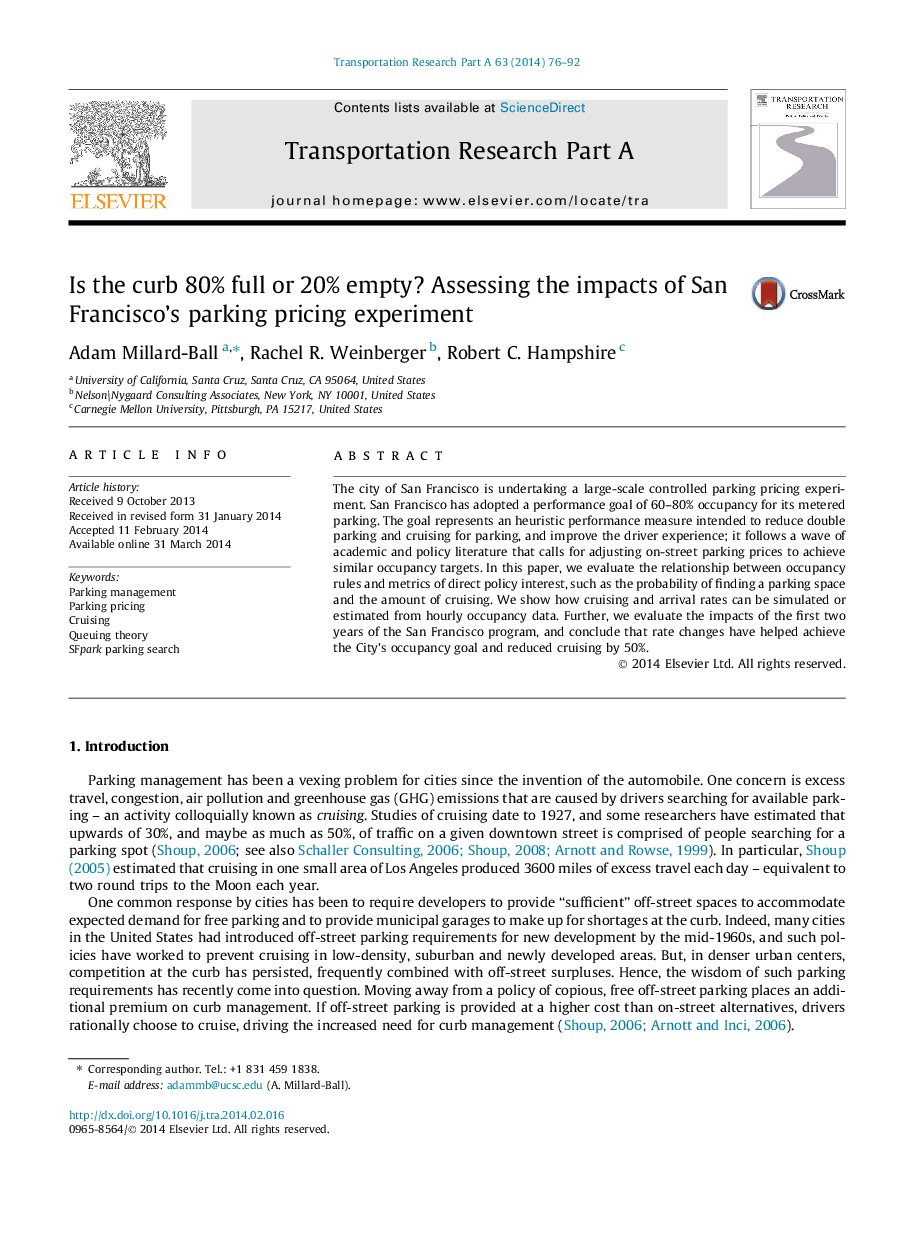| Article ID | Journal | Published Year | Pages | File Type |
|---|---|---|---|---|
| 312035 | Transportation Research Part A: Policy and Practice | 2014 | 17 Pages |
•We evaluate the impacts of San Francisco’s parking experiment, SFpark.•We develop methods to infer cruising and the probability that a driver finds a space.•SFpark is slowly achieving its goal of moving occupancy into a target range of 60–80%.•SFpark has reduced cruising for parking by about 50%.
The city of San Francisco is undertaking a large-scale controlled parking pricing experiment. San Francisco has adopted a performance goal of 60–80% occupancy for its metered parking. The goal represents an heuristic performance measure intended to reduce double parking and cruising for parking, and improve the driver experience; it follows a wave of academic and policy literature that calls for adjusting on-street parking prices to achieve similar occupancy targets. In this paper, we evaluate the relationship between occupancy rules and metrics of direct policy interest, such as the probability of finding a parking space and the amount of cruising. We show how cruising and arrival rates can be simulated or estimated from hourly occupancy data. Further, we evaluate the impacts of the first two years of the San Francisco program, and conclude that rate changes have helped achieve the City’s occupancy goal and reduced cruising by 50%.
